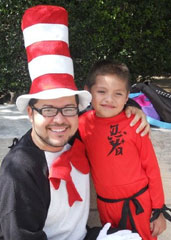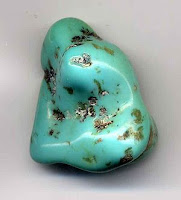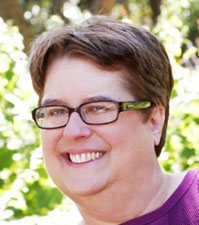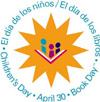
Joseph Rodriguez and nephew Pete Ezekiel Rodriguez.
1. When and how did you become interested in sharing bookjoy?
RJR: In 2001, a group of community organizers and I got together to advance family literacy and promote college readiness. We founded the East End Education Project in Houston, Texas. We established “Bookjoy in the East End,” an annual program to celebrate the power and joy of languages, books, and storytelling. We established partnerships with the Children’s Museum of Houston, Houston Chronicle, Houston Community College, HoustonPBS Channel 8, and Houston Public Library, among others.
2. How did you first learn about Día and what has been your experience with Día?
RJR: I learned about Día in 1996, and since then I have worked with literacy teams and volunteers to adopt and promote Día. I have seen Día grow in the lives of children and families in places where I have lived: Gambier, Ohio; Willimantic, Connecticut; Houston and Austin, Texas.
3. What are your hopes for Día 2011, Día’s 15th Anniversary?
RJR: I hope that more organizations and schools adopt and promote Día—even on a daily basis—and recognize how relevant multiple literacies are to create and interpret meaning across world languages and human cultures. Literacy has been my passport to discover worlds beyond my own, and I want to share this experience and Día with more generations of readers and thinkers.
4. What helpful tip(s) do you have for those organizing a Día event for the first time?
RJR: My recommendation would be to adopt the practice of collaboration with organizations and businesses committed to linking families and children to books and diverse languages. Our Día work in many towns and cities across the country has been strengthened with people who recognize the benefits of literacy and multilingualism in the lives of readers of all ages, colors, and abilities.
5. What is your favorite example of Bookjoy as either a child or an adult?
RJR: A few years ago, I explained to an editor at the Houston Chronicle how our family would sit together in our living room to work on puzzles and board games or we would find our favorite reading spot in our house, including the front patio and backyard. Literacy happened everywhere and even in public spaces: riding on Houston’s MTA buses to the supermercado or neighborhood library or even while eating a raspa at the park. Words and ideas were alive—then and now. I am fascinated at how interconnected the word libre is to libro.
6. What are you reading now?
RJR: Every day, I read and reread to shape my thinking and creativity.
I just finished reading Pat Mora’s letters to teachers in ZING! Seven Creativity Practices for Educators and Students (2010). As an educator, I am motivated to practice my personal creativity with my students.
I am enjoying Evidence (2009), a volume of poems by Mary Oliver.
A native of Wisconsin recommended Rascal (1963) by Sterling North, and I am learning about a young boy’s adventures and how animals can become our best friends.
Since I was a young boy, I have been interested in the Statue of Liberty, which was originally named “Liberty Enlightening the World.” (Isn’t that a great name for a statue that also describes the power of literacy?) At a school book fair in Creedmoor, Texas, I found Lady Liberty: A Biography (2008) written by Doreen Rappaport and illustrated by Matt Tavares. The words and art capture the detail and history of this gift to the U.S. from the French.



